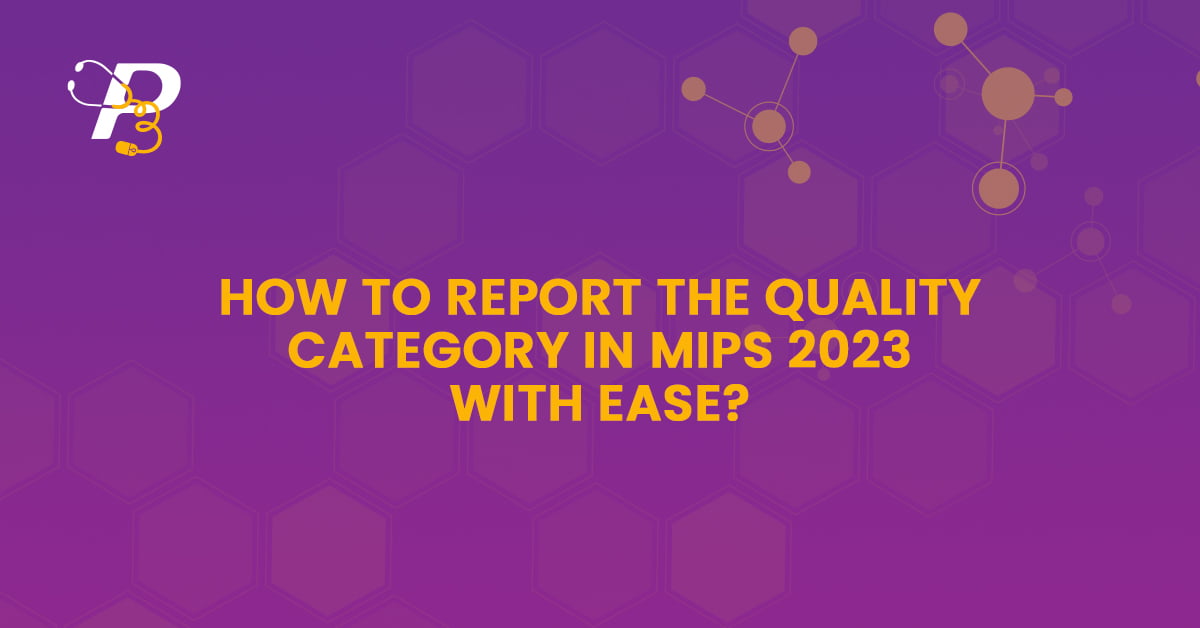How to Improve your Score as a Small Practice in MIPS 2023?
The US healthcare system is now accepting new challenges to make itself even better. Therefore, CMS has planned to upgrade the provider’s performance with its MIPS 2023 framework. It is gradually making the Medicare Quality Payment Program a little more complex. Overall, it has higher goals for improved quality care and patient outcomes. Alongside this, cutting the extra cost of healthcare at the same time as inducing value for money is another motive. However, let’s just centralize our discussion in this blog on traditional MIPS reporting in 2023.
There are several reporting participants in the MIPS program. One of them is a small practice that gets the benefits of additional reporting relaxations as compared to others. In this blog, we will see:
- What has MIPS 2023 brought for these small practices?
- Are they ready to take on new challenges?
- How can they get the highest MIPS score?
Small Practices Struggling Hard to Survive
Whom we refer to as small practices are either solo practitioners or any small groups with 15 or fewer clinicians. These clinicians can be primary care physicians, gynecologists, chiropractors, and other providers. They usually offer personalized care that is catered to the requirements and needs of specific patients. It may ultimately result in improved patient satisfaction and health outcomes.
Small practices, however, could have particular difficulties, such as;
- insufficient resources
- Lack of administrative assistance
- problems adhering to regulations, etc.
On the other side, we have the participation option for small practices in MIPS. Let us tell you here that programs like MIPS 2023 necessitate intensive reporting and performance-improvement efforts. Thus, it might be challenging for small practices to take part in the program. However, the CMS hasn’t neglected them at all. Therefore, like all other MIPS final rules, CMS has again provided a flexible framework for small practices.
Significant Changes in MIPS 2023 for Small Practices
Fortunately, the overall MIPS final rule for the 2023 performance year hasn’t changed much. The eligibility requirement is unaltered, while the penalty avoidance threshold stays at 75%. The MIPS categories are also the same. However, MIPS is now more difficult, and there are more complicated reporting options.
Mentioned below are some changes for small practices in the MIPS final rule.
Addition of measures #110 and #111 to new measure #493
Measures #110 and #111 were for influenza and pneumonia, respectively. However, both of these have now been added to new measure #493. Measure #493 makes a combination of both vaccines with the Tdap and herpes zoster vaccines. Meanwhile, the clinician who will report these newer measures will get a minimum of 7 points.
The Sunrise of MIPS Value Pathways in PY 2023
MIPS Value Paths (MVPs) will be available as a reporting option starting in 2023. MVP reporting enables physicians to better compare themselves to their peers who have similar patient experiences. Instead of six quality measures, clinicians must only report four. Furthermore, they have the option to simultaneously report conventional MIPS and MVPs. CMS will use the clinician’s highest available score out of all possible scores.
No Exceptional Performance Bonus from Now On
The end of the exceptional performance bonus can be detrimental to healthcare practices. Clinician groups that used the exemption and had trouble meeting the level for penalty avoidance will be immediately re-enrolled in MIPS 2023. Consequently, it will increase the dollar amount on the penalty side of the bucket.
Tips for Small Practices: How to Improve the MIPS 2023 Performance Score?
Small practices can prosper from taking part in programs like MIPS regardless of these challenges. All they need to do is enhance patient care while cutting expenses and earning rewards. Many small practices may potentially qualify for further support, such as technical assistance or financial incentives. These factors will all make it easier for them to take part in MIPS and other value-based payment schemes.
Nevertheless, there is no silver bullet that will guarantee success. Anyhow, there are activities you may take now to maximize your score for the 2023 MIPS reporting year.
- Choose your MIPS measures for reporting wisely. Generally reporting the same measures, you had selected in the past MIPS performance year seems tempting. However, this ease cannot guarantee you the high scores you need for MIPS this year. Therefore, it’s better to pick new measures, but first, dive deeply into measure options. Your frequently-used CPT codes might help you find the best MIPS measures.
- Make your new MIPS reporting measure your safety blanket. CMS will give a minimum of six points for picking a newer measure, regardless of performance. So, be confident with the new reporting measures, as participation matters more than performance.
- Use current technologies in your practice.
- Every small practice with 15 or fewer providers is exempt from the Promoting Interoperability category by default. But, if they opt to report in this category and receive a score that is higher than the Quality score, the overall score may increase. Simply report the category as a small practice, and your score will be adjusted accordingly.
Conclusion
To summarize, there isn’t a universal approach to improving your MIPS 2023 score. But you can improve your chances of success by choosing your measures carefully. You may add a new measure, lower the workload on your team, or report the Promoting Interoperability category as a modest practice.
It’s not too late to begin. Please get in touch with P3Care. Being a MIPS-qualified registry, we offer you MIPS consulting services and give you the most effective solution.















Leave a Reply
Want to join the discussion?Feel free to contribute!